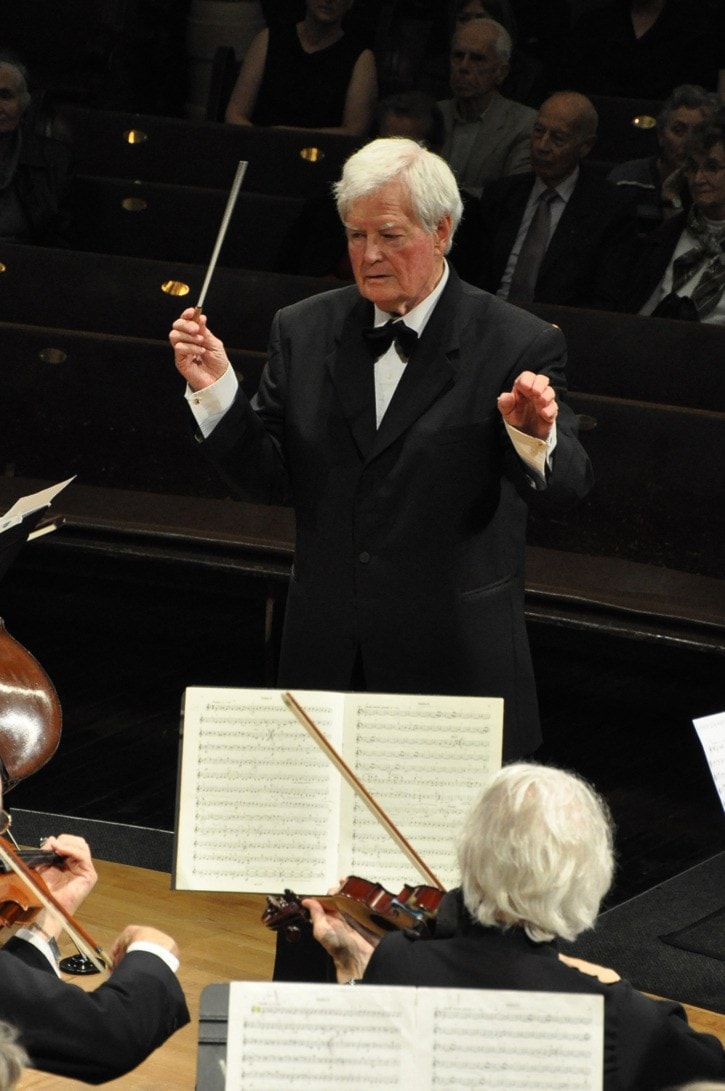The conductor is the most important person in the concert, and yet he doesn’t make a sound.
He stands with his back to the audience, moves his arms, flicks his wrists and waggles his baton, which is nothing more magical than a small white stick.
Unless you’ve played in an orchestra, you may be a little hazy about what Norman Nelson, our esteemed conductor, is actually doing.
First of all, he engineers a clean start and finish. This is not as easy as it sounds. Anyone who has participated in a sport or dance performance where starting together matters, knows that it can go completely wrong. Then, Norman decides how fast the piece should go. Different musicians have different ideas and – maybe more important -- different sets of notes on different instruments seem to naturally play themselves faster or slower. The orchestra has to be together, though, or it’s an almighty mess.
Watch the conductor is the first thing a musician learns when he or she starts playing in an orchestra.
But the player has to look at his music too: it would be too difficult to memorize. So he puts music and conductor in the same sightline, and with that, also stays aware of what the people around him are doing. Ears are also good for that.
Then, of course, the conductor “interprets” the music: he or she tells the musical story in his own way. Think of a song that’s been covered many times. My Way, for instance. It can be done innumerable ways, and there’s always one more possibility.
So Norman sets to work. Most of the work he does with the orchestra takes place in rehearsal. If you have been to an SPO rehearsal, you know that the orchestra seldom plays more than a few bars before Norman stops, with some remark. “Louder!” he will say to the timpani. “Break the skins, I’ll pay for the damage!” Or to the strings, “Quiet! Less, less, don’t play at all.” He shows the string players (usually with his baton on his left arm) where on the bow to play something, and how – off the string or on, a long sweep or a little peck. “Menacing,” he will say. Or “Tom and Jerry.”
This is what Norman Nelson is particularly good at – reaching in and finding the details that will shape the sound so that the music will come to life in the most exciting, moving way.
In the concert, when our Maestro is standing with his back to the audience, this is what he is doing. He starts the orchestra off together, sets the tempo, and helps solo instruments or sections come in when they have an important entrance. He is also reminding the musicians how he wants something played. “Hit those drums!” “Shshsh!”
When he is conducting, his face, his arms, every part of him reflects what he wants, and he doesn’t have to say a thing. The musicians read him along with their parts, and the music happens.
Here is a trivia question:
How long has Norman Nelson conducted the Sooke Philharmonic Orchestra?
Send your answers to sookephilharmonic@gmail.com. We’ll draw from the correct answers and award a SPO scarf to the lucky winner!
Check us out at www.sookephil.ca.
Did you know? At the age of 20, Norman Nelson began playing in the first violin section of the London Philharmonic Orchestra.
Contributed by Sonia de Wit
Season’s Greetings
Sooke Philharmonic Chamber Players with the Sooke Philharmonic Chorus perform on Saturday, Dec. 3 and Dec. 4.
Music by Handel, Bach, Vaughan Williams, Leopold Mozart and more. Soloists: Wade Noble, Baritone, Nancy Washeim, Soprano.
A portion from every ticket sold will go towards the Sooke Christmas Bureau’s fundraising activities.
Saturday, Dec. 3 - 7:30 p.m.
Sooke Baptist Church, 7110 West Coast Road,
Sunday, Dec. 4 - 2:30 p.m., New St. Mary’s Church.
Tickets available at EMCS, South Shore Gallery, Shoppers Drug Mart and Wood Travel.
